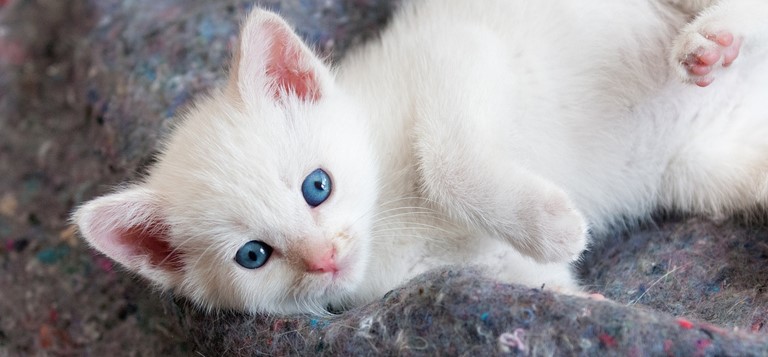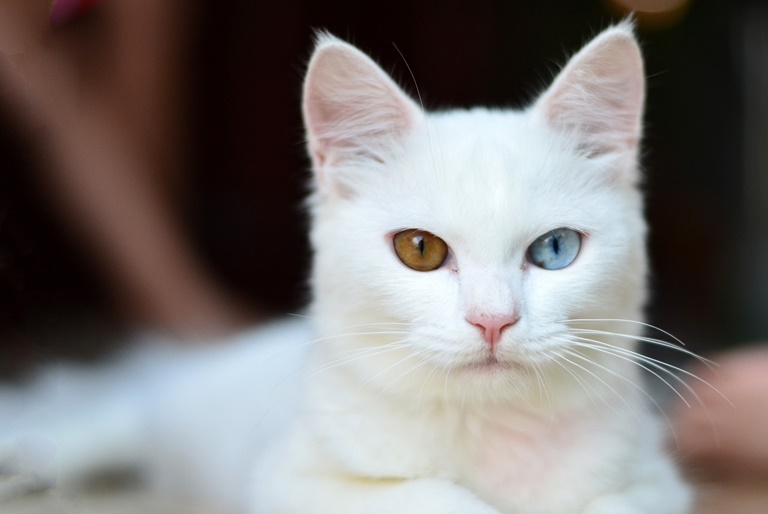Are white cats deaf?

Exploring White Cats: Unravelling the Deafness Connection
Cats have long been companions to humans, charming us with their unique personalities and distinctive appearances. Among the various coat colours and patterns, white cats stand out as elegant and intriguing. However, there’s more to these felines than meets the eye. White cats, in a genetic twist, are often associated with an increased likelihood of being deaf. In this article, we’ll delve into the world of white cats, examining their genetics, the link to deafness, and some interesting facts.
Understanding White Cat Genetics
To comprehend why white cats are more prone to deafness, we must first explore the complex genetics behind their coat colour. Coat colour in cats is determined by several genes, with one key gene being responsible for white fur. This gene comes in different forms, known as alleles. Cats with two dominant alleles for this gene have white fur, while those with two recessive alleles do not.
The same gene influencing white fur can also impact the development of sensory hair cells in the inner ear, affecting hearing. When this gene interferes with these cells’ development, it can result in varying degrees of deafness.
5% – cats are white
20% – white cats with non-blue eyes are deaf
40% – white cats with one blue eyes are deaf
75% – white cats with two blue eyes are deaf
Cornell University – Ask Elizabeth: White Cats and Blindness/Deafness

“white cats, if they have blue eyes, are almost always deaf”
Charles Darwin, The Variation of Animals and Plants under Domestication, 1868
The Link to Deafness
White cats are often associated with a predisposition to deafness. Studies suggest that approximately 65-85% of all-white cats with blue eyes experience some degree of deafness in one or both ears. The connection between white fur, blue eyes, and deafness lies in the same genetic process governing coat colour.
The gene responsible for white fur can also influence the inner ear’s development. When a white cat inherits two dominant alleles of this gene, it can lead to complete deafness. If the cat possesses one dominant allele, it may experience partial deafness or hearing impairment to varying extents. Interestingly, cats with two recessive alleles for this gene typically have normal hearing.
Deaf white cats – Andrej Kral1 and Stephen G. Lomber
The Role of Blue Eyes
Adding another layer of complexity to the relationship between white cats and deafness is the presence of blue eyes. Not all white cats have blue eyes, but a significant number do. Blue eyes in white cats result from the same genetic mechanisms that can contribute to deafness.
Blue eyes in cats are influenced by the OCA2 gene. When a white cat inherits two copies of this gene, it displays blue eyes. However, the presence of the W gene, which is responsible for white fur, can exacerbate the likelihood of deafness. The inner ear and the eye share a common developmental pathway, making them susceptible to shared genetic influences.

Interesting Facts
- Heterochromia: Some white cats exhibit a unique characteristic called heterochromia, where one eye is blue, and the other is a different colour, such as green or gold. Cats with heterochromia are less likely to experience deafness compared to those with two blue eyes, or they will only be deaf in the ear on the side of the blue eye.
- Deaf Cats Lead Fulfilling Lives: Deaf cats rely on their heightened senses of sight and smell, compensating for their hearing loss. They can be just as loving and playful as cats with normal hearing.
- Cultural Beliefs: In various cultures, white cats are considered symbols of both good luck and bad omens, adding cultural diversity to their mystique.
Not just cats…
In many mammals, including dogs, a white coat can be associated with deafness. There is an increased likelihood of congenital deafness in animals with white pigmentation including white yaks, horses, rabbits and dogs (e.g. White Huskies and Dalmatians, especially ones with blue eyes).

This is because the inner ear relies on a small number of pigment-producing cells called melanocytes in order to function correctly, and there are fewer melanocytes in animals with white fur and blue eyes. The pigmentation-deafness correlation may also affect humans.
Hearing loss is 50% higher in white people
Lin FR, Thorpe R, Gordon-Salant S, Ferrucci L. Hearing loss prevalence and risk factors among older adults in the United States. J Gerontol A Biol Sci Med Sci. 2011; 66:582–590. doi: 10.1093/gerona/glr002.
Deafness is said to be more prevalent among those with oculocutaneous albinism, Piebaldism or Waardenburg syndrome; a genetic disease affecting skin pigmentation and often resulting in different coloured eyes, such as one blue eye and one brown eye. Furthermore, Epidemiologic studies of large populations have found that the rate of hearing loss is 40 to 60 percent lower in black individuals compared with white individuals.
Association of Skin Color, Race/Ethnicity, and Hearing Loss Among Adults in the USA – NCBI
Racial and ethnic disparities in diagnostic efficacy of comprehensive genetic testing for sensorineural hearing loss – Springer Link






